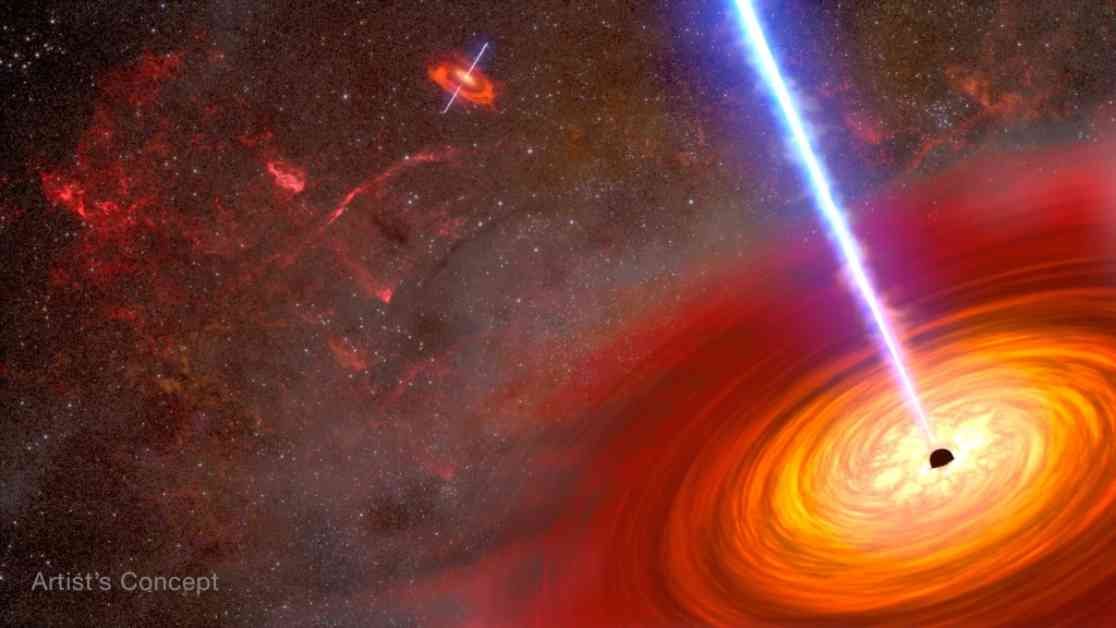Like two giant wrestlers facing off, scientists have discovered the closest pair of supermassive black holes ever observed. These black holes are approximately 300 light-years apart and were found using NASA’s Hubble Space Telescope and the Chandra X-ray Observatory. They are located within a pair of colliding galaxies and are shining brightly due to the gas and dust falling into them, making them active galactic nuclei (AGN).
While there have been several “dual” black holes discovered before, this pair is the closest one found in the local universe using both visible and X-ray light observations. The discovery of this supermassive black hole duo provides a rare opportunity to study a nearby example of these cosmic phenomena, which are located about 800 million light-years away.
The discovery of these black holes was unexpected and was made possible by Hubble’s high-resolution imaging, which revealed three optical diffraction spikes within the host galaxy. These spikes indicated a concentration of glowing oxygen gas in a small area, prompting further investigation with the Chandra observatory in X-ray light.
The researchers were able to confirm the presence of two closely spaced supermassive black holes using the data from the telescopes, as well as archival radio data from the Karl G. Jansky Very Large Array. The energetic black hole duo also emits powerful radio waves, further supporting the conclusion that these are indeed two supermassive black holes in close proximity.
The discovery of these black holes sheds light on the process of galaxy mergers and the formation of supermassive black hole pairs. The two black holes will continue to spiral closer together until they eventually merge, creating gravitational waves that will ripple through space and time.
While the Laser Interferometer Gravitational-Wave Observatory (LIGO) has detected gravitational waves from mergers between stellar-mass black holes, the longer wavelengths resulting from a supermassive black hole merger are beyond its capabilities. The upcoming LISA mission, led by the ESA in partnership with NASA and other institutions, aims to detect these longer wavelength gravitational waves from deep space.
The Hubble Space Telescope, which has been operating for over three decades, continues to make groundbreaking discoveries that expand our understanding of the universe. It is a testament to international cooperation between NASA and the ESA, and it has revolutionized our view of the cosmos.
The discovery of this supermassive black hole duo opens up new avenues for research into these cosmic phenomena and provides valuable insights into the mechanisms driving galaxy evolution. Scientists will continue to study these black holes and their eventual merger, further unraveling the mysteries of the universe.












